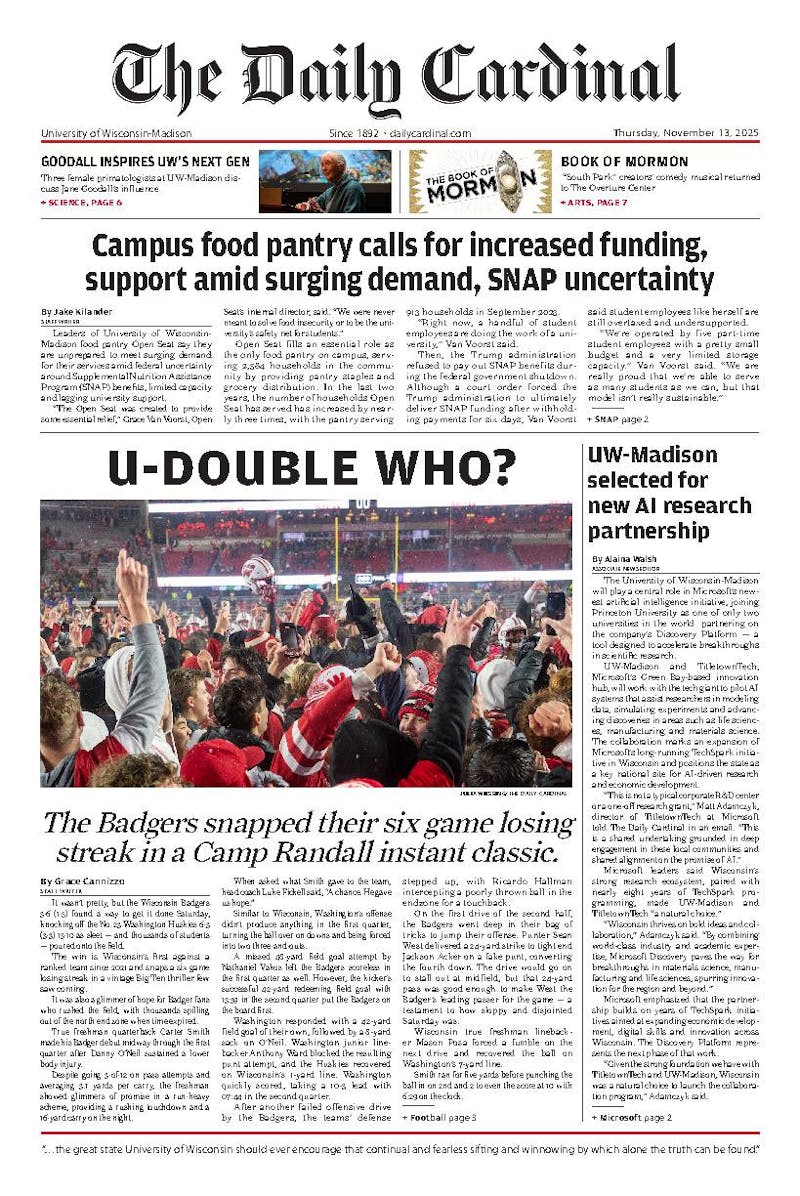At age 25, before many people acquire a steady job, Zadie Smith made a name for herself in the literary world with her first novel, the critical success 'White Teeth.' But this name came with a price: higher expectations for Smith's future work, which her second novel, 2002's 'The Autograph Man,' failed to meet. Now, at the age of 30, she has come out with a third novel, 'On Beauty.'
'On Beauty' in many ways resembles Smith's earlier work, with the cast of characters again centered on a multi-racial family, the middle-class Belseys. It is the diversity within the family as well as the primarily white, middle-class university town setting that allows for Smith's scathing depictions of racial attitudes in the novel.
While 'White Teeth' focused primarily on England's perceptions of race, Smith uses 'On Beauty' to show the racial complexities of the United States, seen through the unique viewpoints of two foreign parents and their American-raised children.
Smith does not hold back when writing about race. This is especially seen when discussing the complicated identities of mixed-race young adults (like Smith herself). In particular, the teenaged Levi Belsey sees himself as entirely black despite his biracial parentage; the novel follows his meaningful, but ultimately misguided, quest to find the 'essence of blackness.'
The difficulties between middle-class minorities and their lower-class counterparts are also explored in the novel. Particularly, this is seen through the character of Carl, an inner city black youth who is allowed to attend a class at the university. Carl criticizes Zora Belsey's political crusade to keep him in the class, saying, 'People like me are just toys to people like you ... I'm just some experiment for you to play with.'
The politics of the middle class, particularly racial issues, are given a blisteringly satirical depiction in 'On Beauty.' The invitation of Howard Belsey's conservative political nemesis Monty to be a guest lecturer at his self-consciously liberal university sparks a political debate over affirmative action that obviously parallels the lives of the characters but is kept humorously in perspective by Smith.
The emotional bond depicted by Smith between the rivals' wives Kiki and Carlene reveals her most powerful writing to date, as she uses them to bridge the tension between liberalism and conservatism. Their human emotions are able to connect the wives and help them deal with their own separate marital issues in an unlikely and touching relationship.
Smith's characterization of Kiki's emotions in particular exposes the stereotype of the 'strong, black woman,' as she exhibits internal strengths and weaknesses despite her outward claim that, 'I cannot be broken. Takes a giant to snap me in half.' Kiki's unspoken thoughts provide the clearest narrative of the novel's many interwoven viewpoints.
What 'On Beauty' lacks in terms of the humor of Smith's previous writing, it makes up for in her most convincing emotional work to date. Humor has its place, but that doesn't mean the work is a comedy, instead revealing Smith's maturation as a writer past simply using humor to make difficult subjects more palatable. This is seen vividly as race, politics and family are entwined in a novel that is as complex as life itself, proving that Smith's literary talent is by no means fleeting.





